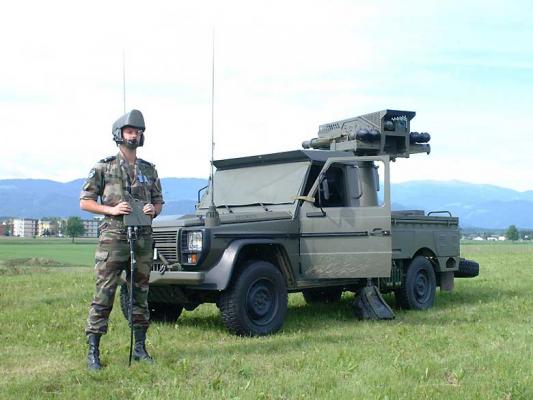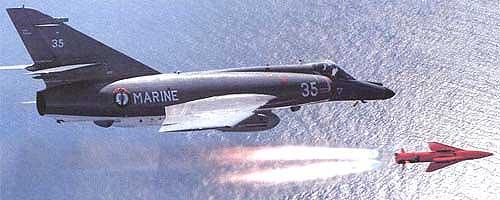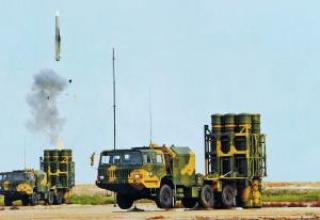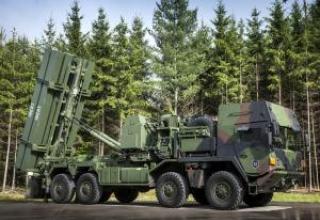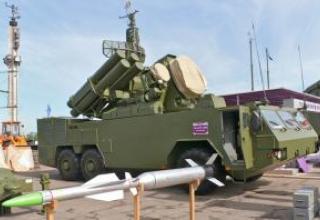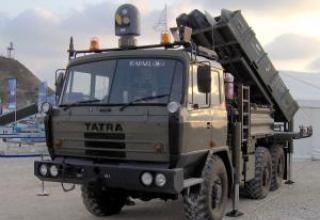French mobile short-range air defense system (VSHORADS - very short-range air defense systems) "Aspic" is designed to protect important industrial facilities, air bases, command posts and groups of troops on the march. In the French air defense system - a key element of air defense against aircraft, helicopters (including in hanging mode) and cruise missiles flying at low and extremely low altitudes. It has a short reaction time.
The complex can use missiles such as "Mistral", "Stinger" and similar.
Complex "Aspic" is produced in series, since 1994 is in service with the French Air Force (30 systems with missiles "Mistral"). It was exported abroad, in particular, is in service with the armed forces of Chile and Austria.
In 1993, it was announced the creation of a consortium of firms "Thomson-CSF" and "Shorts" for the development and production of mobile short-range system based on Aspic SAM system using missiles "Starburst" and "Starstreak" for the British Armed Forces and promotion to the international market. The Aspic complexes of this configuration are purchased for the Finnish Armed Forces.
Composition:
The "Aspic" complex is a fully automated stand-alone fire unit, which can be used in a stationary variant or mounted on various chassis that can withstand the load of 1500 kg, including light chassis with wheel arrangement 4x4 type "Hammer", "Peugeot" P4. In the latter case, four combat-ready missiles, located in transport and launch containers, are located on the launcher, and four more are in stock and located on the vehicle bed. Depending on the type of missiles used, the number of combat-ready missiles on the launcher can be increased to eight.
The combat vehicle of the complex is equipped with a top-fixing and orientation system. The crew consists of two persons: a driver and a shooting operator. The basic element of the complex - fire control system, which includes: optical TV detection system "ARES", infrared camera, computer and automatic target tracking system. For stand-alone combat operations, the operator-shooter uses an optical detection system, and at night - an infrared camera. The availability of its own electron-optical target detection equipment reduces the radar visibility of the system and increases its combat stability. The remote control allows the combat team to stay in the shelter at a distance of up to 50 m from the combat vehicle during combat operations.
The "Aspic" SAM system can be equipped with a self-contained compact modular system of "own-user" identification - SB14 with a range up to 20 km.
Samantha or its simplified version, Clara, is used as the control point. The Samantha control station, developed by Thomson-CSF, provides: air surveillance, target designation and control of repaired warheads, automatic identification of the nationality of targets, and communication with the superior units of the air defense system. All combat operations are automated.
"Samantha" is equipped with a pulse Doppler radar of 2630P type with a flat phased array, which provides interference immunity in the air defense. Anti-aircraft artillery systems (AMUs), man-portable air defense systems (MANPADS) and short-range air defense systems of "Aspic" type are controlled at a distance of up to 5 km. When working with Aspic SAM systems (up to 8 combat vehicles), target designation is performed automatically and data is transmitted via radio channel. When operating the SAM system and the man-portable air defence systems, information on the air situation is displayed on the screens of remote terminals.
The detection range of aircraft is 20 km, of helicopters 10 km, the frequency of information updates is 1.5 s and the average operating time per failure is 1200 hours. To increase the detection range, the radar antenna installed on a hydraulic lifting device, rises to a height of 8m. Battle point calculation - two people: the commander and operator of the radar.
The "Samantha" control point is placed in a standard container, which can be installed on the chassis of a cross-country vehicle with a carrying capacity of 5t and transported by C-130 and C-160 aircraft. All systems have built-in protection against electromagnetic radiation.
Characteristics:
| ZRK "Aspic" | |
| Range, km | 0.3-7.0 |
| Defeat height, km | 0.5-3.0 |
| Maximum rocket speed, m/s | 800 |
| Maximum target speed, m/s | 440 |
| The reaction time, sec | 7.0 |
| Target detection range, km | 20 |
Testing:
During Operation Desert Storm in 1991, French Jaguar aircraft used AS-30L, which was normally launched from the aircraft during a 1.3 km dive (2.2 km entry altitude). A container with Atlis-2 target designation system was used for laser illumination of targets, suspended on a sub-basement pylon. A video was shown to the press depicting the AS-30L missile hitting a fortified ammunition depot, flying into its premises through the right gate door. In total, about 60 missiles were fired during this operation, the number of hits was 97% (according to other data 80%). According to French pilots in the Middle East theatre of war, they began to record ground targets at a distance of 16-20 km using the television system of the upgraded Atlis-2 container.
During NATO's air aggression against Yugoslavia in 1999, French Super Etendart fighter jets struck targets in Serbia (mainly in the western and southwestern parts of the country), attacking army and paramilitary police units while providing advanced aircraft pointers (AFAC), whose functions were taken over by American tactical F-16C fighters. The combat missions were conducted by pairs of aircraft - one aimed at the target using the Atlis-2 laser system, while the other struck by AS-30L missiles or laser-guided 500-pound GBU-12 bombs.
Sources:
- Василин Н.Я., Гуринович А.Л. "Зенитные ракетные комплексы" .-Мн.: ООО "Попурри", 2002- 464с.
- BMLV Informations system - "Aspic"
- PZ raketni sustavi slicni Avengeru
